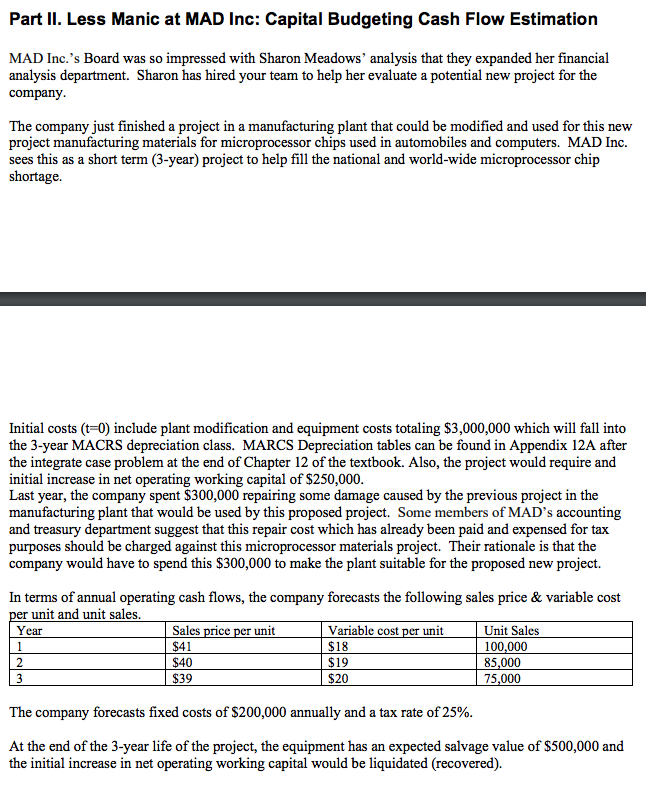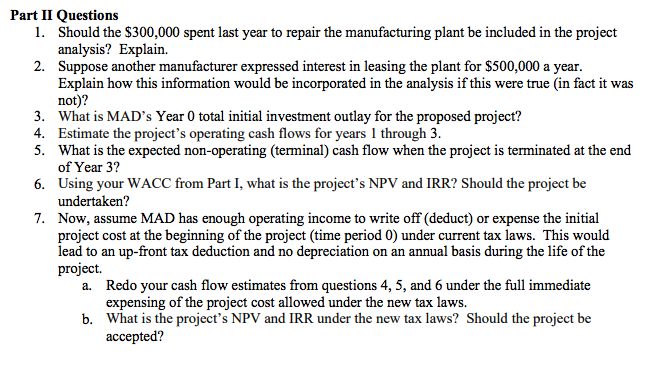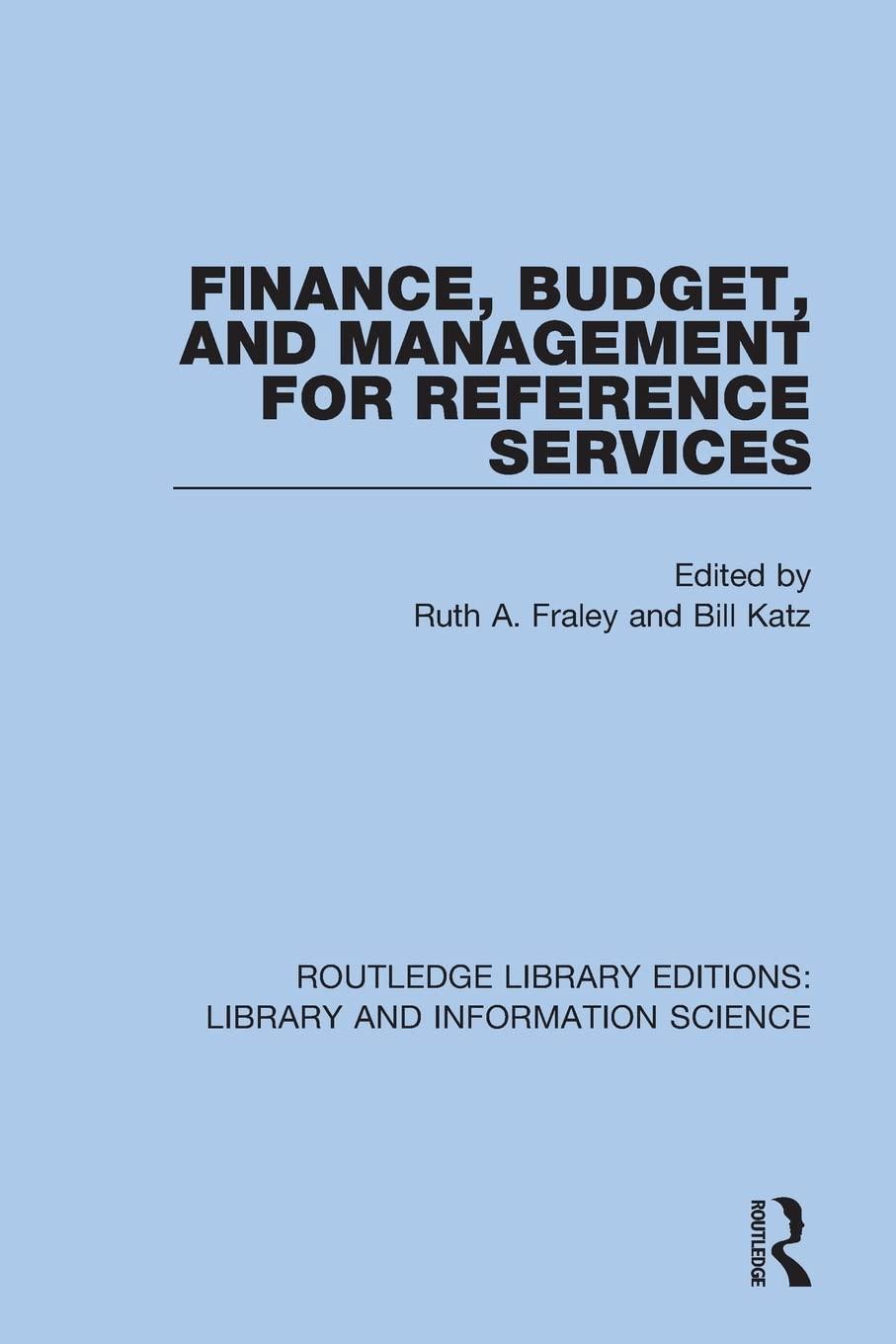

Part II. Less Manic at MAD Inc: Capital Budgeting Cash Flow Estimation MAD Inc.'s Board was so impressed with Sharon Meadows' analysis that they expanded her financial analysis department. Sharon has hired your team to help her evaluate a potential new project for the company The company just finished a project in a manufacturing plant that could be modified and used for this new project manufacturing materials for microprocessor chips used in automobiles and computers. MAD Inc. sees this as a short term (3-year) project to help fill the national and world-wide microprocessor chip shortage. Initial costs (t=0) include plant modification and equipment costs totaling $3,000,000 which will fall into the 3-year MACRS depreciation class. MARCS Depreciation tables can be found in Appendix 12A after the integrate case problem at the end of Chapter 12 of the textbook. Also, the project would require and initial increase in net operating working capital of $250,000. Last year, the company spent $300,000 repairing some damage caused by the previous project in the manufacturing plant that would be used by this proposed project. Some members of MAD's accounting and treasury department suggest that this repair cost which has already been paid and expensed for tax purposes should be charged against this microprocessor materials project. Their rationale is that the company would have to spend this $300,000 to make the plant suitable for the proposed new project. In terms of annual operating cash flows, the company forecasts the following sales price & variable cost per unit and unit sales. Year Sales price per unit Variable cost per unit Unit Sales $41 $18 100,000 $40 $19 85,000 3 $39 $20 75,000 1 2 The company forecasts fixed costs of $200,000 annually and a tax rate of 25%. At the end of the 3-year life of the project, the equipment has an expected salvage value of $500,000 and the initial increase in net operating working capital would be liquidated (recovered). Part II Questions 1. Should the $300,000 spent last year to repair the manufacturing plant be included in the project analysis? Explain. 2. Suppose another manufacturer expressed interest in leasing the plant for $500,000 a year. Explain how this information would be incorporated in the analysis if this were true (in fact it was not)? 3. What is MAD's Year 0 total initial investment outlay for the proposed project? 4. Estimate the project's operating cash flows for years 1 through 3. 5. What is the expected non-operating (terminal) cash flow when the project is terminated at the end of Year 3? 6. Using your WACC from Part I, what is the project's NPV and IRR? Should the project be undertaken? 7. Now, assume MAD has enough operating income to write off (deduct) or expense the initial project cost at the beginning of the project (time period 0) under current tax laws. This would lead to an up-front tax deduction and no depreciation on an annual basis during the life of the project. a. Redo your cash flow estimates from questions 4, 5, and 6 under the full immediate expensing of the project cost allowed under the new tax laws. b. What is the project's NPV and IRR under the new tax laws? Should the project be accepted








